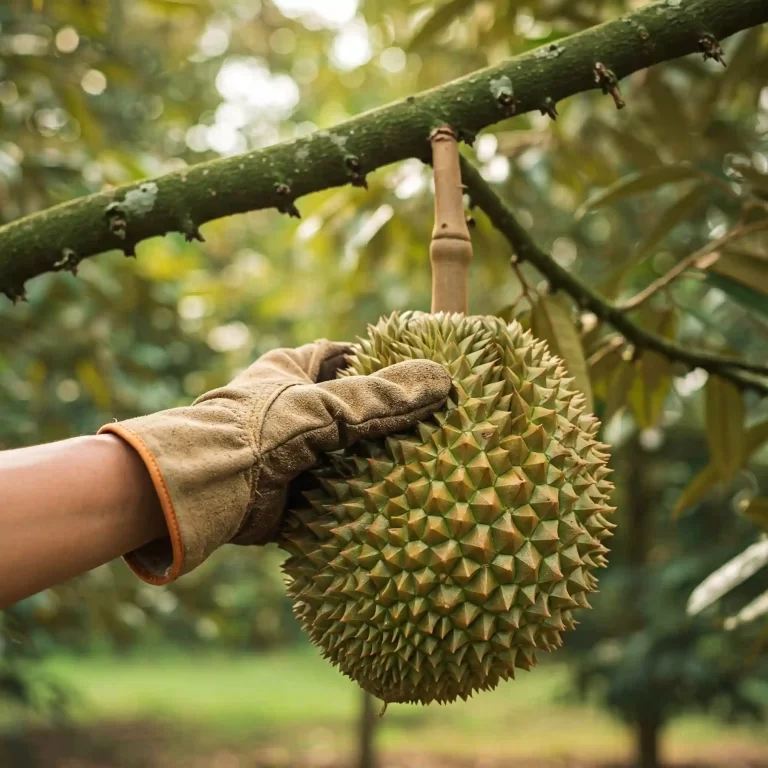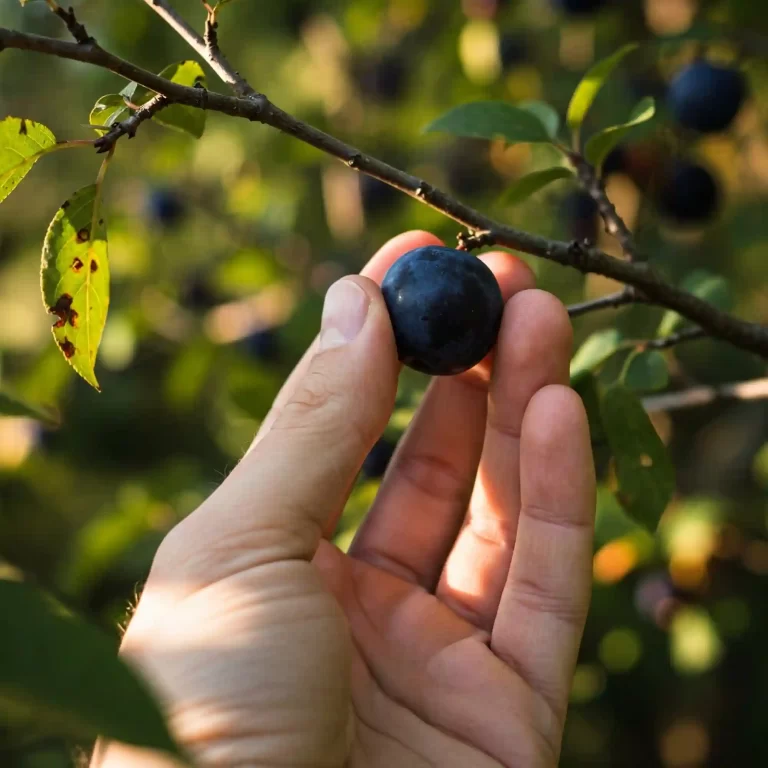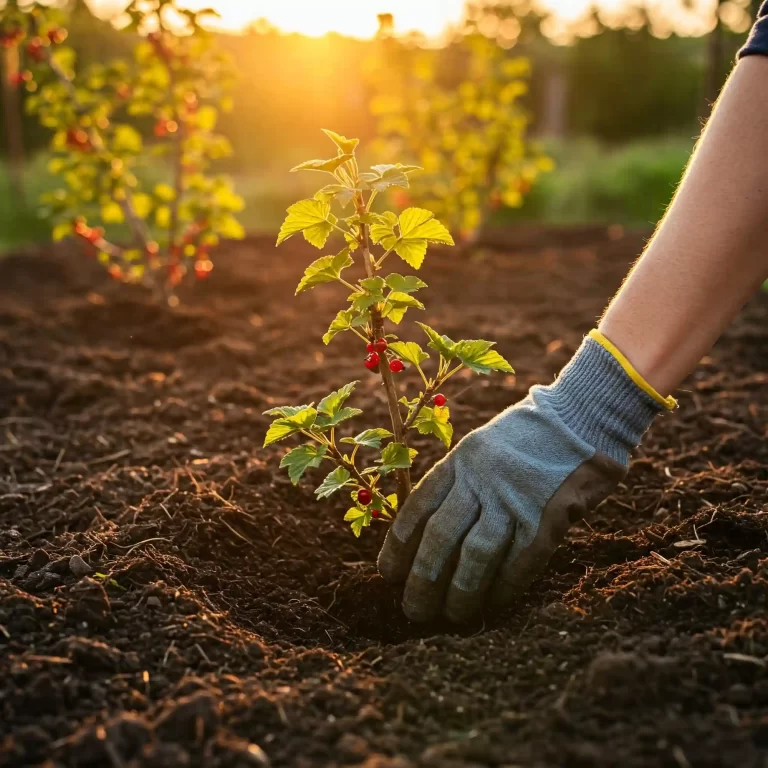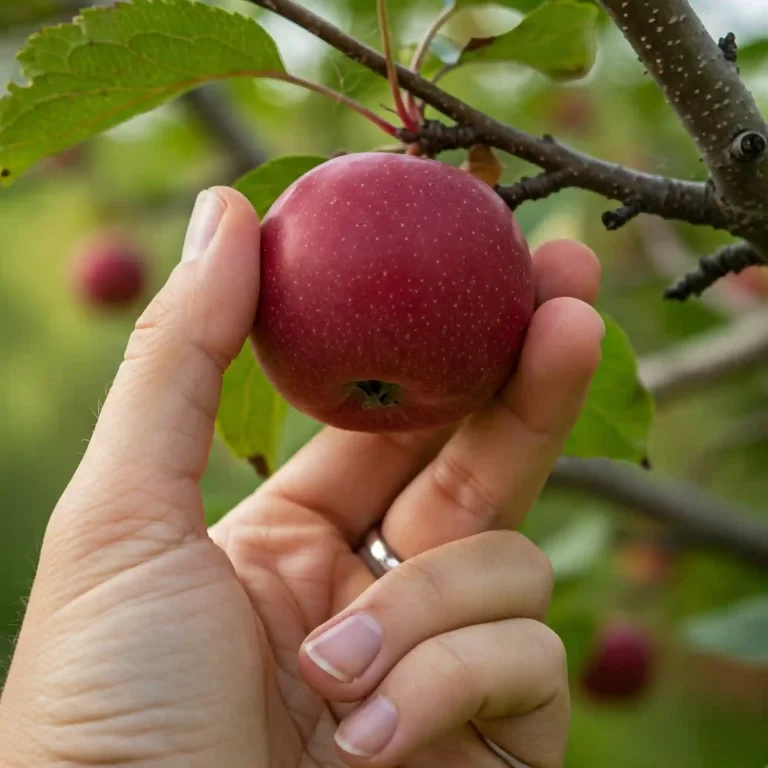| Key Takeaways |
| – Tamarind is a tropical fruit-bearing tree with edible pulp and seeds that have many benefits and uses. |
| – You can grow your own tamarind tree from a seed at home by following six easy steps: stratifying, scarifying, germinating, potting, watering, and pruning. |
| – You will need some basic materials and tools, such as tamarind seeds, water, paper towel, ziplock bag, refrigerator, knife, nail file, sandpaper, potting soil, peat moss, vermiculite, pot, scissors, shears, pruning sealant, etc. |
| – You will also need some patience and care, as it may take several weeks or months for your tamarind seed to sprout and grow into a healthy and productive tree. |
Did you know that tamarind is one of the most versatile and delicious fruits in the world? Tamarind (Tamarindus indica) is a tropical fruit-bearing tree that belongs to the legume family (Fabaceae). It produces brown pods that contain sweet and sour pulp and seeds that can be used for various purposes.
Tamarind has many benefits for your health, kitchen, and garden. It is rich in vitamin C, antioxidants, fiber, and minerals. It can help improve digestion, lower blood sugar, fight infections, and reduce inflammation. It can also add flavor and texture to your dishes, drinks, sauces, and desserts. It can even act as a natural preservative and tenderizer for your meats.
Tamarind comes in different varieties, such as sweet, sour, red, or green. Each variety has its own characteristics and preferences. Some are more suitable for eating fresh or making juice, while others are better for cooking or making paste. Some prefer warm and dry climates, while others can tolerate cold and wet conditions.
If you love tamarind and want to grow your own tamarind tree from a seed at home, you are in luck. In this article, we will teach you how to do it in six easy steps. You will learn how to stratify, scarify, germinate, pot, water, and prune your tamarind seed and tree. You will also get some tips and tricks on how to care for your tamarind tree and enjoy its fruits.
Are you ready to grow your own tamarind tree from a seed? Let’s get started!
How to Stratify Tamarind Seeds
The first step to grow your own tamarind tree from a seed is to stratify your tamarind seeds. Stratification is the process of exposing seeds to cold temperature to break their dormancy and trigger their sprouting.
Tamarind seeds have a hard and dormant coat that prevents them from germinating easily. They need to be exposed to cold temperature for several weeks to break their coat and activate their embryo. This mimics the natural conditions that they experience in their native habitat.
To stratify your tamarind seeds, you will need:
- Tamarind seeds
- Water
- Paper towel
- Ziplock bag
- Refrigerator
Here are the steps to stratify your tamarind seeds:
- Soak your tamarind seeds in water for 24 hours. This will soften their coat and make them easier to stratify.
- Drain the water and wrap your tamarind seeds in a damp paper towel. Make sure the paper towel is moist but not dripping wet.
- Place the wrapped tamarind seeds in a ziplock bag and seal it tightly.
- Label the bag with the date and the name of the seed.
- Put the bag in the refrigerator for 4 to 6 weeks. This will expose your tamarind seeds to cold temperature and break their dormancy.
Some tips and warnings for stratifying your tamarind seeds are:
- Check your tamarind seeds regularly for mold or rot. If you see any signs of mold or rot, discard the affected seeds and change the paper towel.
- Change the paper towel if it dries out or becomes too wet. The paper towel should be moist but not soggy.
- Do not expose your tamarind seeds to freezing temperature or direct sunlight. This may damage or kill them.
- Do not stratify your tamarind seeds for longer than 6 weeks. This may reduce their viability or cause them to sprout prematurely.
How to Scarify Tamarind Seeds
The second step to grow your own tamarind tree from a seed is to scarify your tamarind seeds. Scarification is the process of scratching or nicking the seed coat to allow moisture and air to enter and stimulate germination.
Tamarind seeds have a thick and hard coat that prevents them from absorbing water and oxygen. They need to be scarified to create a small opening or wound on their coat that will allow water and oxygen to penetrate and activate their germination.
To scarify your tamarind seeds, you will need:
- Tamarind seeds
- Sharp knife
- Nail file
- Sandpaper
Here are the steps to scarify your tamarind seeds:
- Identify the eye of your tamarind seed. The eye is the small black dot where the seed attaches to the pod. This is where the root will emerge from when the seed germinates.
- Use a sharp knife, a nail file, or sandpaper to make a small cut or notch on the opposite side of the eye. This is where the shoot will emerge from when the seed germinates.
- Be careful not to damage the embryo inside the seed. The embryo is the white part of the seed that contains the future plant.
- Repeat the process for all your tamarind seeds.
Some tips and warnings for scarifying your tamarind seeds are:
- Wear gloves to protect your fingers from injury or infection.
- Use a clean and sterilized tool to avoid introducing any bacteria or fungi to your tamarind seeds.
- Avoid over-scarifying or under-scarifying your tamarind seeds. Over-scarifying may cause too much water loss or infection, while under-scarifying may not allow enough water or oxygen to enter.
How to Germinate Tamarind Seeds
The third step to grow your own tamarind tree from a seed is to germinate your tamarind seeds. Germination is the process of a seed sprouting and developing into a seedling.
Tamarind seeds can germinate after they have been stratified and scarified. They need to be placed in a suitable medium that provides them with moisture, oxygen, and warmth. They also need to be exposed to light, but not too much.
To germinate your tamarind seeds, you will need:
- Tamarind seeds
- Potting soil or peat moss
- Vermiculite
- Small pot or tray
- Water
- Sunny spot with indirect light
Here are the steps to germinate your tamarind seeds:
- Fill a small pot or tray with moist potting soil or peat moss. You can also add some vermiculite to improve the drainage and aeration of the medium.
- Place your tamarind seeds in the pot or tray, about an inch apart from each other. Cover them with a thin layer of soil or vermiculite, about a quarter of an inch thick.
- Keep the pot or tray in a warm and sunny spot with indirect light. The ideal temperature for tamarind seed germination is between 25°C and 30°C (77°F and 86°F).
- Water your tamarind seeds lightly every day or every other day, depending on the moisture level of the medium. The medium should be moist but not soggy.
- Watch for signs of germination, such as a white root tip or a green shoot emerging from the soil. This usually takes 7 to 10 days after scarification.
Some tips and warnings for germinating your tamarind seeds are:
- Do not over-water or under-water your tamarind seeds. Over-watering may cause root rot or fungal infection, while under-watering may cause drought stress or poor germination.
- Do not expose your tamarind seeds to direct sunlight or high temperature. This may cause them to dry out or burn.
- Do not disturb or move your tamarind seeds during germination. This may damage their roots or shoots.
How to Pot Tamarind Seedlings
The fourth step to grow your own tamarind tree from a seed is to pot your tamarind seedlings. Potting is the process of transferring your seedlings from their germination container to a larger pot that can accommodate their growth and development.
Tamarind seedlings can be potted when they have two or three pairs of leaves. They need to be planted in a suitable pot size and material that provides them with enough space, drainage, and support. They also need to be planted in a suitable potting mix that provides them with enough nutrients, moisture, and air.
To pot your tamarind seedlings, you will need:
- Tamarind seedlings
- Pot size and material
- Potting mix
- Water
Here are the steps to pot your tamarind seedlings:
- Choose a suitable pot size and material for your tamarind seedlings. The pot should be large enough to hold the root ball of your seedling and allow some room for growth. The pot should also have drainage holes at the bottom to prevent waterlogging. You can use clay or plastic pots, depending on your preference and availability.
- Prepare a suitable potting mix for your tamarind seedlings. You can use a well-drained potting mix that contains loam or compost, or you can make your own by mixing equal parts of garden soil, sand, and organic matter (such as manure, leaf mold, or peat moss). You can also add some organic fertilizer or manure to the potting mix to boost the nutrient content.
- Gently remove your tamarind seedling from its original container without disturbing its roots. You can use a spoon or a knife to loosen the soil around the root ball and lift it out carefully.
- Plant your tamarind seedling in its new pot at the same depth as before. Make sure the root ball is covered with soil and the stem is upright and stable.
- Water your tamarind seedling thoroughly until the water drains out of the pot.
Some tips and warnings for potting your tamarind seedlings are:
- Avoid transplant shock or root damage by handling your tamarind seedlings carefully and gently.
- Place your potted tamarind seedlings in a sunny location with good air circulation.
- Do not over-pot or under-pot your tamarind seedlings. Over-potting may cause root rot or poor growth, while under-potting may cause root-bound or stunted growth.
How to Water Tamarind Trees
The fifth step to grow your own tamarind tree from a seed is to water your tamarind trees. Watering is the process of providing your trees with adequate moisture for their growth and survival.
Tamarind trees need to be watered regularly and deeply, especially during their first year of growth. They need to be watered more frequently and abundantly during the hot and dry season, and less frequently and sparingly during the cold and wet season. They also need to be watered according to their age, size, climate, and soil conditions.
To water your tamarind trees, you will need:
- Tamarind trees
- Water
- Wooden stick or finger
Here are the steps to water your tamarind trees:
- Check the soil moisture level by inserting your finger or a wooden stick into the soil. If the soil feels dry or crumbly, it is time to water your tamarind tree. If the soil feels moist or sticky, it is not time to water your tamarind tree.
- Water your tamarind tree deeply and slowly until the water drains out of the pot. You can use a watering can, a hose, or a drip irrigation system to water your tamarind tree.
- Allow the soil to dry slightly between waterings. You can check the soil moisture level again before watering your tamarind tree.
Some tips and warnings for watering your tamarind trees are:
- Use rainwater or filtered water if possible. Avoid tap water or salt water that may contain harmful chemicals or minerals that may affect your tamarind tree’s health or growth.
- Avoid over-watering or under-watering your tamarind trees. Over-watering may cause root rot or fungal infection, while under-watering may cause drought stress or poor growth.
- Adjust the watering frequency and amount according to the weather and season. Water your tamarind trees more often and more generously during the hot and dry season, and less often and less generously during the cold and wet season.
How to Prune Tamarind Trees
The sixth and final step to grow your own tamarind tree from a seed is to prune your tamarind trees. Pruning is the process of cutting or trimming their branches or stems to improve their shape, health, or productivity.
Tamarind trees need to be pruned occasionally to remove any dead, diseased, damaged, or crossing branches that may affect their appearance or function. They also need to be pruned to control their size and shape, especially if they are grown in pots or containers. They can be pruned according to your preference or style, such as bonsai or standard.
To prune your tamarind trees, you will need:
- Tamarind trees
- Sharp and clean pruning tools (such as scissors or shears)
- Pruning sealant or wound dressing
Here are the steps to prune your tamarind trees:
- Prune your tamarind tree in late winter or early spring when the tree is dormant. This is the best time to prune your tamarind tree as it will have less sap flow and less risk of infection or bleeding.
- Prune any dead, diseased, damaged, or crossing branches that may affect your tamarind tree’s health or function. Cut them off at their base or at a healthy branch junction using sharp and clean pruning tools.
- Prune any long or leggy branches that may affect your tamarind tree’s shape or balance. Cut them back by one-third or one-half using sharp and clean pruning tools.
- Prune your tamarind tree according to your preference or style. You can shape your tamarind tree into a bonsai by pruning its roots, trunk, branches, and leaves to create a miniature version of a mature tree. You can also shape your tamarind tree into a standard by pruning its lower branches and leaving its upper branches intact to create a single-stemmed tree with a rounded canopy.
- Apply some pruning sealant or wound dressing to the cut ends of your tamarind tree’s branches. This will prevent bleeding or infection and promote healing.
Some tips and warnings for pruning your tamarind trees are:
- Do not prune more than one-third of your tamarind tree at a time. This may stress or shock your tamarind tree and reduce its growth or fruiting.
- Make clean and angled cuts to avoid infection or injury. Do not make flush cuts that may damage the bark or collar of your tamarind tree’s branches.
- Use sharp and clean pruning tools to avoid tearing or crushing your tamarind tree’s branches. Sterilize your pruning tools before and after use with alcohol or bleach.
Conclusion
Congratulations! You have learned how to grow your own tamarind tree from a seed in six easy steps: stratifying, scarifying, germinating, potting, watering, and pruning.
In conclusion, growing your own tamarind tree from a seed is a rewarding and enjoyable experience. You can do it at home by following six easy steps: stratifying, scarifying, germinating, potting, watering, and pruning. You can also learn some tips and tricks on how to care for your tamarind tree and enjoy its fruits. By growing your own tamarind tree from a seed, you can have a beautiful and productive plant that will provide you with delicious and versatile tamarind for years to come.



